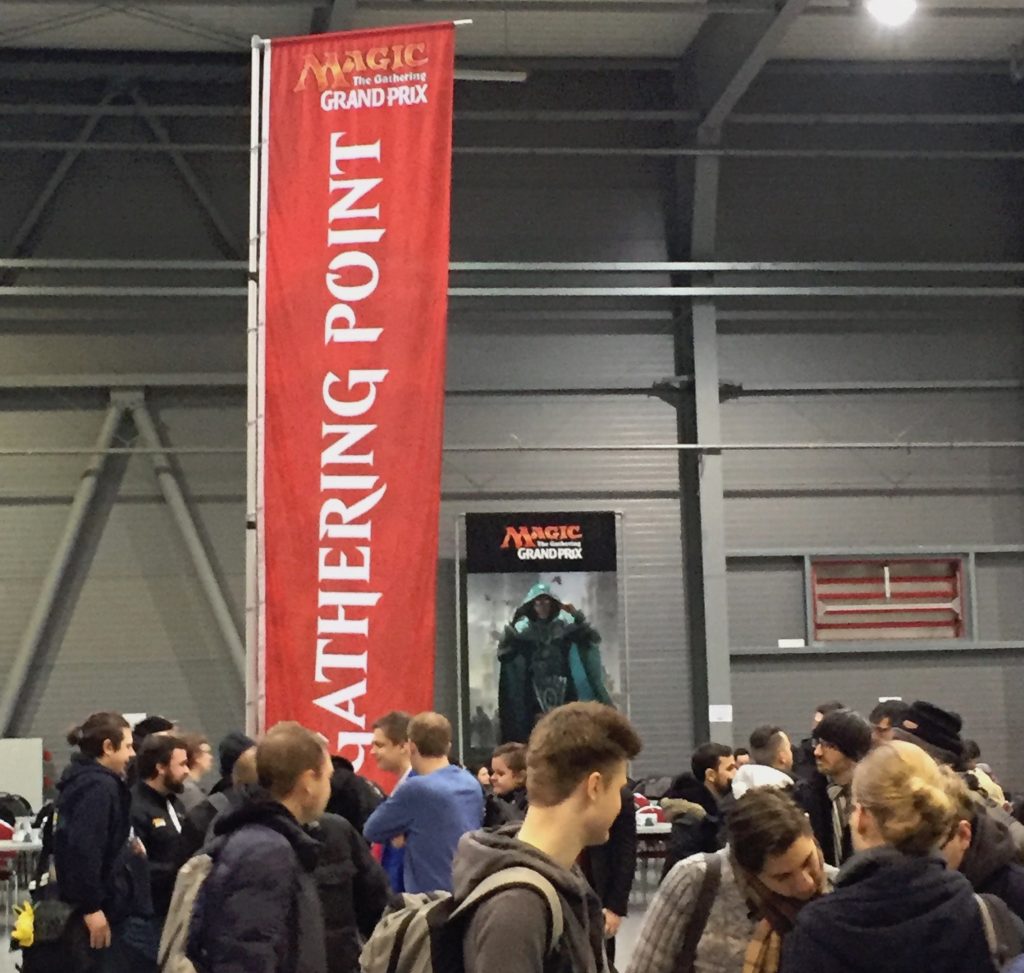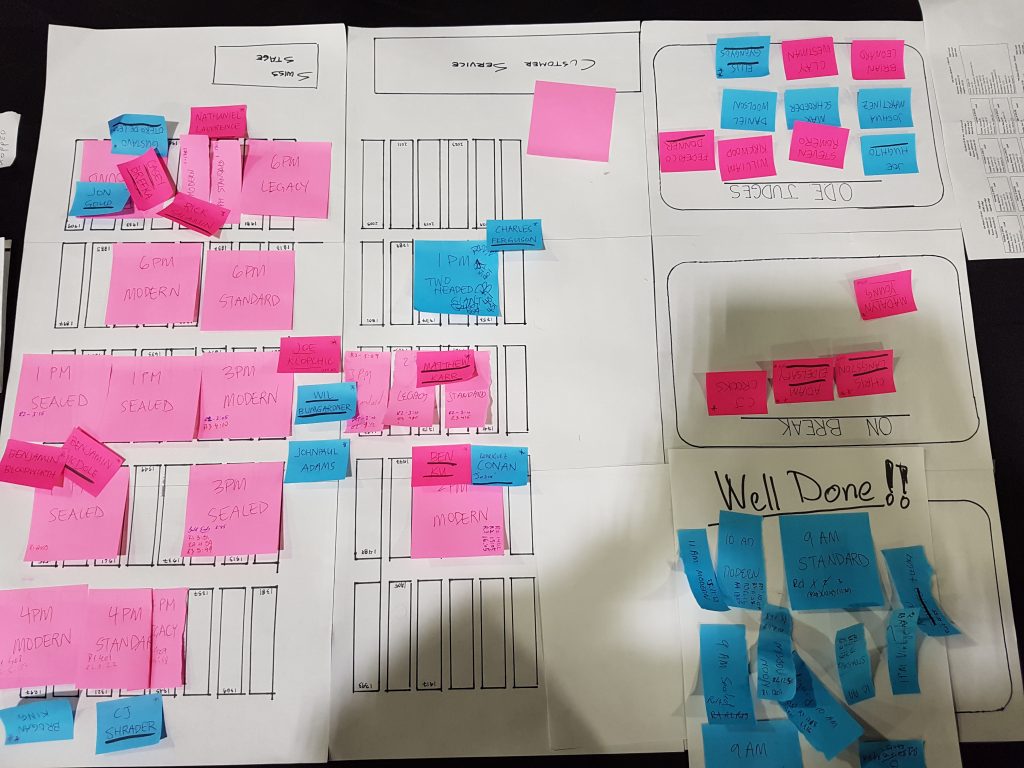Sunday Side Event Management – SE Manager (During the Event, pt2)
CIAO to everybody,
Our special guest and processes and organisation expert, Ivan Petkovic, continues his series about how to manage *Side events at Grand Prix*.
Today’s article is about Side Event Manager’s responsibilities during the GP.
Happy reading!
Welcome to the second part of “During the day” major activities in the life of Side Event Manager. Last time we took a look at Starting a shift, Managing brakes, and Managing floor, as well as activities regarding starting a new scheduled event. Today we’ll take a deeper look how to keep an overview of what is happening during the day. Let’s start!
During the Day – Overview
It is a good practice that s SE Manager somehow keeps an overview of what is actually happening at any given moment. Quite often the TO (or someone from his crew) will come and ask you for a status of a certain event, expected duration or where a certain judge is. With more than dozen of scheduled and a couple of dozen on demand events running simultaneously, this may be a challenge.
There are a couple of ways to keep an overview
Updated Schedule
What an SE Manager can do is to keep the schedule he built updated. That means, update any planned and unplanned changes, like judges assigned to the event but also add new information like starting and ending table number for each event, in which round the event is (and estimated ending of the event). The reason why this information is important is in a few cases: to organise brakes, a Break Manager (or whoever is in his role) will need to know where he can find specific events and who is judging them. Same goes for Space Manager for his planning of the space for events (especially when space needs to be reused at a later point of the day or venue breakdown needs to be planned; look at corresponding role descriptions for details about their activities).
In order to have this information easily updated, I would suggest requesting from HJs that they update the following information for their event:
- Current round
- Planned end of the current round
- Number of active players
- Last active table number
Plan of the Venue
Another useful tool to use in addition to the updated schedule is to have a map of the venue. Visualising the venue helps greatly with planning. Also, having the map available to multiple judges and various roles they perform allows them to plan their activities. I would recommend printing the venue plan to at least A3 size. But don’t forget to actually go to the floor and double check the reality against the plan, preferably on Sunday morning. You would be surprised what you can find.
Trello
The idea behind using Trello with SE management is to digitise information that is usually found in SE plan and make updating easier (no more paper notes upon paper notes). That way it is easier to hand over the work to someone else since Trello usage can also be standardised.
You can find a great article about using it here. There is some controversy regarding the use of Trello, and you should definitely try to see if that is something you would like. My opinion is that it is best used if multiple people (including HJs) can use it and update the information. If you use it just for yourself, then it might become a problem for at least two reasons:
You restrict the knowledge only to yourself (people need to access your laptop/phone to get the info or talk to you)
You might have a tendency to manage Trello to perfection and see the world only through it.
Analog Trello
Something I have recently been introduced (by Jurgen, Riccardo & Matteo) to is a concept combining items from “Updated Schedule” and “Plan of the Venue” into one. The general idea is following:
- Draw a relatively large (A3+) map of the venue (like you would if you use “Plan of the Venue” concept)
- Use large sticky notes to represent tournaments occupying the rows of tables
- Use small sticky notes to represent the judges (bonus: colour code them for shifts). You can use different coloured sticky notes to represent various information like shifts.
- Take a look of one we used at GP Kuala Lumpur (thx Riccardo)
- What this system provides is easily accessible information to multiple people in a clean way. Since I used it only once, there is still some experimentation and optimisation to be done on my side to write a detailed recommendation.
- An area that can be difficult to manage is breaks representation since it is difficult to keep them updated (with any system). An idea might be to delegate this to the HJs. But be careful if not updated, the wrong information can cause some wrong decisions (e.g. a tournament has enough judges when it doesn’t).
Nevertheless, I find this approach currently the most interesting and will be using it in the future as a default one.
Whatever you decide to do while in this role, don’t forget to visit your judges on the floor and check with them (especially HJs) how are things progressing and is there anything they might need. Your judges will be happy to see you and feel taken care of.
During the day – Other
Reading this role description so far, one might think that if the person in charge decides to delegate things like organising floor or the brakes, there is not that much to do. Following the same logic, you might think that the HJ of a GP doesn’t that much to do since almost everything he can delegate. The thing is that everything that follows into the “other” or “general” category is usually something that the SE Manager (like the HJ), must take care of.
From the last couple of GPs these were usually:
- Event(s) gets much bigger than expected and needs new / more space
- A specific event is delayed and needs to be looked closer (might need support from more senior judges)
- Something was executed wrongly or without enough preparation that might result in poor customer experience (e.g. prize distribution created a huge snake)
- Not enough judges at certain event(s) – This is always happening and will make the best plan obsolete
- 2HG & Trios/team events need to have tables renumbered. Make sure kickstart team & HJ know that
- Prizes: Depending on the TO, prizes might be handled differently. Check with the TO what is his preferred method. Some I have seen:
- HJs of big events handle prizes themselves (by organising prize station or giving at the beginning of each round in single elimination events).
- TO organises a prize station where all prizes are given (for scheduled events as well as ODEs)
That is it regarding major activities that are happening during the day. What remains is finishing the day and that will be the focus of the last part.
Stay well, stay tuned!
I hope you enjoyed this article, and I’m looking forward to reading your comments.
If you want to add a comment and discuss this article in the Judge forums, click HERE.
All comments, feedback, and advice are very welcome 🙂



